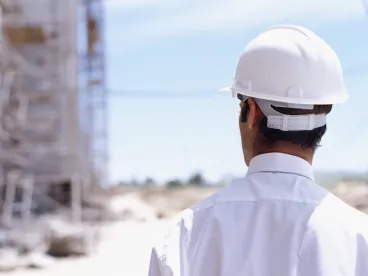Amidst the ongoing Covid-19 pandemic, daily and sometimes hourly changes in federal, state, and local orders and regulations are significantly impacting the construction industry. This blog provides an overview of practical issues to consider related to your California construction projects in light of the ever-changing landscape.
When it comes to determining whether work should be stopped on a particular project, there are three major considerations to address: (1) where is the project located, (2) what orders have been issued in that locality, and (3) what kind of project is it?
Whether and to what extent your construction project can continue will depend on where the project is located. California’s list of “Essential Critical Infrastructure Workers”[1] exempts all construction work from the purview of California’s statewide “Stay at Home” Order.[2] However, various California counties and cities have issued their own “Shelter in Place” or similar orders that only exempt certain types of construction – most commonly “essential infrastructure”, public works, healthcare and residential construction.
For example, San Francisco County’s Order[3] reads, in relevant part, as follows:
For purposes of this Order, individuals may leave their residence to provide any services or perform any work necessary to the operations and maintenance of “Essential Infrastructure,” including, but not limited to, public works construction, construction of housing (in particular affordable housing or housing for individuals experiencing homelessness), airport operations, water, sewer, gas, electrical, oil refining, roads and highways, public transportation, solid waste collection and removal, internet, and telecommunications systems (including the provision of essential global, national, and local infrastructure for computing services, business infrastructure, communications, and web-based services), provided that they carry out those services or that work in compliance with Social Distancing Requirements as defined this Section, to the extent possible.
A number of counties throughout the Bay Area have adopted identical or similar language in their orders. As another example, the City of Los Angeles expressly allows “construction of commercial, office and institutional buildings.”[4] Other localities, such as the County of Riverside, have not issued their own orders and instead are choosing to rely on the statewide order to impose restrictions.
In addition, several counties have also issued guidance, often in the form of Frequently Asked Questions, regarding what types of construction projects are allowed to continue. For example, San Francisco’s explanation[5] of its Order advises that “[m]ost commercial construction projects are non-essential and must stop” and goes on to describe the types of “essential infrastructure projects” that can continue, including public works, residential construction, airports, utilities, oil refining, highways and roads, public transportation, waste removal and collection and internet and telecommunications systems.
Significant differences between California’s statewide order (allowing all construction) and local orders (allowing only certain types of construction projects) are raising questions about which order governs.
Several counties and cities are taking the position that their more stringent local regulations must be followed notwithstanding California’s less restrictive Order. While this is not a clear-cut or definitive conclusion, the least risky and most conservative approach is to proceed with your construction projects only if clearly exempted by California’s statewide Order and the local order(s) in the jurisdiction where your project is located. This is especially true given that the localities are the ones that issue permits, schedule inspections and sign-off on work. We have also heard from various localities that they will continue enforcing their local bans on any construction that does not squarely fit within an exemption of the local order.
Even if your project is allowed to proceed under both the statewide and applicable local order(s), there are numerous practical and ethical issues to consider. At the forefront of these considerations is the wellbeing of your employees, project staff, and the general population at large, and the ability to maintain the safety of these individuals if construction of your project continues. All recommendations issued by the Center for Disease Control, State of California and local jurisdictions in which your project are located should be followed.
As you are aware, things are changing quickly and there is no clear-cut authority or bright line rule. The above is not an unequivocal statement of the law, but instead represents our best interpretation of where things currently stand. This blog post does not address the potential impacts of the numerous other local, state and federal orders that have been issued in response to the Covid-19 pandemic.
FOOTNOTES
[1] https://covid19.ca.gov/img/EssentialCriticalInfrastructureWorkers.pdf
[2] https://www.gov.ca.gov/wp-content/uploads/2020/03/3.19.20-attested-EO-N-33-20-COVID-19-HEALTH-ORDER.pdf
[3] https://www.sfdph.org/dph/alerts/files/HealthOrderC19-07-%20Shelter-in-Place.pdf
[4] https://www.lamayor.org/sites/g/files/wph446/f/article/files/SAFER_AT_HOME_ORDER2020.03.19.pdf
https://www.lamayor.org/sites/g/files/wph446/f/article/files/SAFER_AT_HOME_ORDER2020.03.19.pdf
[5] https://sf.gov/stay-home-except-essential-needs


 />i
/>i

